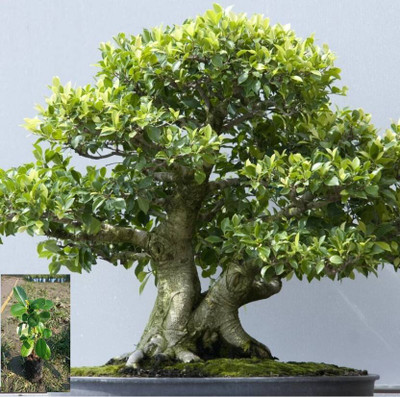ADANNAYA China Palm Plant(Hybrid, Pack of 1)
Quick Overview
Product Price Comparison
The Chinese Banyan (Ficus microcarpa) is a popular species used for bonsai cultivation. It is a versatile and resilient tree native to Southeast Asia and is known for its aerial roots and dense canopy. Here are some key characteristics and care tips for a Chinese Banyan Bonsai plant: Location: Place your Chinese Banyan Bonsai in a spot with bright, indirect sunlight. It can tolerate some shade but requires sufficient light for healthy growth. Watering: Banyan Bonsai trees prefer slightly moist soil. Water the plant thoroughly when the topsoil starts to dry out, but avoid overwatering, as it can lead to root rot. Ensure proper drainage in the bonsai pot. Pruning and Training: Regular pruning and shaping are essential for maintaining the bonsai's desired form. Trim back new growth to maintain the tree's size and shape. Wiring can be used to guide the branches into the desired position, but be cautious not to wrap the wire too tightly to prevent damage. Fertilization: Apply a balanced, organic fertilizer during the growing season (spring to early fall) to promote healthy growth. Follow the instructions on the fertilizer package for proper application. Repotting: Banyan Bonsai trees should be repotted every 2-3 years to prevent root binding. Repotting is typically done in spring before the active growing season. Trim some of the roots during repotting to maintain a healthy root system and reduce the tree's size. Humidity and Temperature: Chinese Banyan Bonsai trees thrive in warm and humid conditions. It is advisable to provide adequate humidity by placing the bonsai on a humidity tray filled with water or misting the foliage regularly. Remember that bonsai cultivation requires patience and careful attention. Regular observation and adjustments to care practices will help keep your Chinese Banyan Bonsai healthy and aesthetically pleasing.


